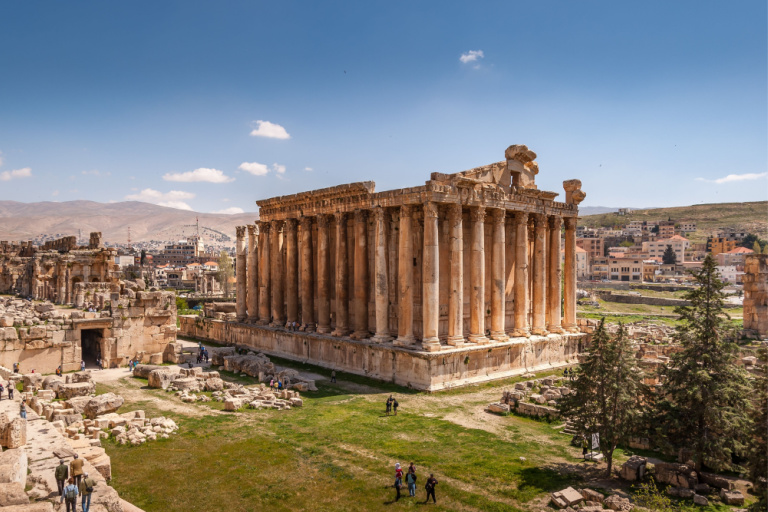
Giscard Matar/Shutterstock
When Is the Best Time to Visit Lebanon?
The best time to visit Lebanon is during the shoulder seasons of April to May and September to October. During these months, the weather is generally mild and sunny across most of the country, with fewer crowds and lower prices than during the peak summer season.
Here are some of the benefits of visiting Lebanon during the shoulder seasons:
- Mild weather: Lebanon has a Mediterranean climate, with hot and dry summers and mild winters. The shoulder seasons offer mild and pleasant temperatures, making it ideal for sightseeing, exploring, and enjoying the outdoors.
- Smaller crowds: The shoulder seasons are less crowded than the peak summer season, so you’ll be able to enjoy Lebanon’s popular tourist attractions without having to deal with large crowds. This is especially important if you’re visiting popular destinations like Beirut, Baalbek, and Byblos.
- Lower prices: Prices for flights, accommodation, and activities are generally lower during the shoulder seasons than during the peak summer season. This means you can save money on your trip without having to sacrifice quality.
Here are some specific examples of how you can enjoy the most of Lebanon during the shoulder seasons:
- April to May: The weather in April to May is typically sunny and warm, with occasional showers. This is a great time to visit for exploring the ancient ruins of Baalbek and Byblos, hiking in the Chouf Mountains, and visiting the beaches of Beirut.
- September to October: The weather in September to October is also typically sunny and warm, with occasional showers. This is a great time to visit for visiting the wine country of the Bekaa Valley, hiking in the Cedars of God Forest, and enjoying the fall foliage in the mountains.
While there are many great times to visit Lebanon, if you’re looking for the best weather and the most opportunities to enjoy the country’s natural beauty and cultural attractions, then we recommend visiting during the shoulder seasons.
Please note that Lebanon is a politically complex country, so it is important to stay informed about the current situation and to take precautions when traveling. It is also important to dress modestly and to be respectful of Lebanese culture and customs.
 Average Temperatures by Month
Average Temperatures by Month
|
Jan |
Feb |
Mar |
Apr |
May |
Jun |
Jul |
Aug |
Sep |
Oct |
Nov |
Dec |
| Fahrenheit |
57°
|
58°
|
61°
|
66°
|
74°
|
81°
|
85°
|
85°
|
82°
|
76°
|
66°
|
60°
|
| Celsius |
14°
|
14°
|
16°
|
19°
|
23°
|
27°
|
29°
|
29°
|
28°
|
24°
|
19°
|
16°
|
Climate in Lebanon
Summer Season in Lebanon
Lebanese summers are typically warm and dry, especially along the coast, with higher temperatures and abundant sunshine. Inland and at higher elevations, the climate can be more temperate. This season is ideal for beach activities and exploring the country's historical and cultural sites, with long, sunny days making it a popular time for tourists and locals alike.
Rainy Season in Lebanon
The rainy season in Lebanon brings the majority of the country's annual rainfall, particularly important for replenishing water sources and agriculture. The rain can be sporadic, with periods of clear weather in between. This season also sees a drop in temperatures, and the rainfall contributes to the country's lush landscapes and the rejuvenation of its natural beauty.
Winter Season in Lebanon
Winters in Lebanon are mild and wet along the coast, while the mountainous regions experience colder temperatures and regular snowfall, making them popular destinations for winter sports. The season is characterized by cooler temperatures and more frequent rainfall compared to other times of the year. Winter in Lebanon offers a chance to experience the country's diverse climate, from snowy mountains to relatively warmer coastal areas.
Our Recommendations
| Destination |
Jan |
Feb |
Mar |
Apr |
May |
Jun |
Jul |
Aug |
Sep |
Oct |
Nov |
Dec |
| Lebanon |
 |
 |
 |
 |
 |
 |
 |
 |
 |
 |
 |
 |






